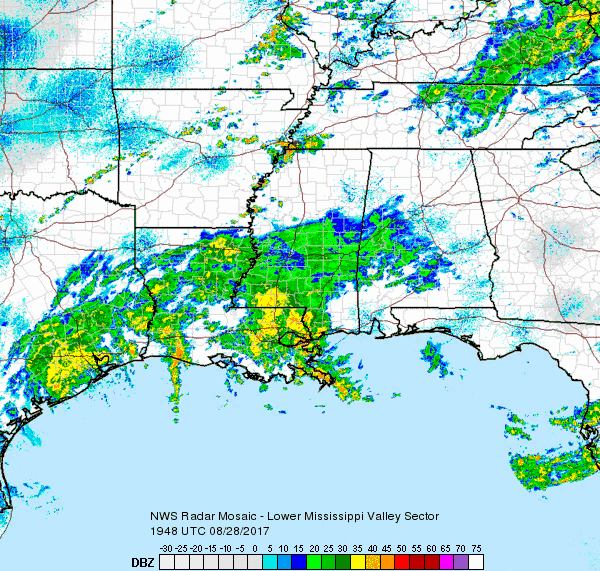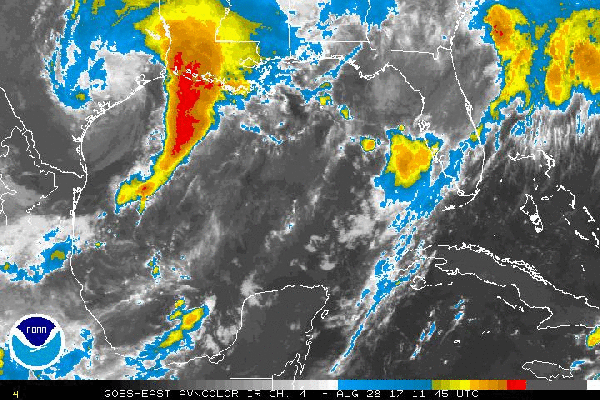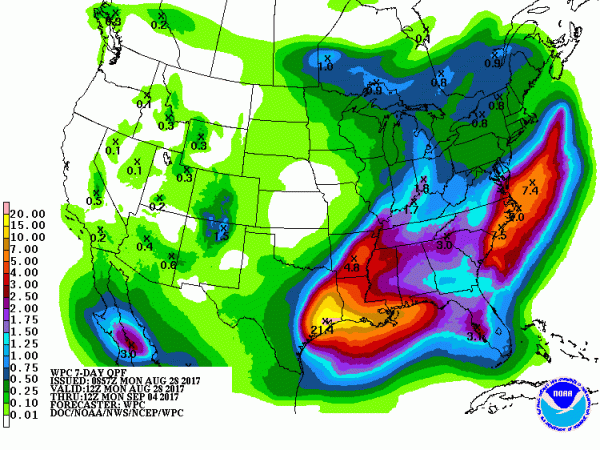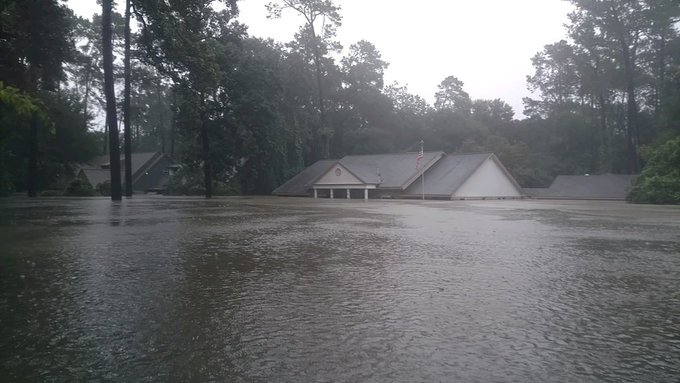With
up to 42 Inches of Rain Already Dumped on Texas, Harvey’s Track
Over Gulf Means 10-21 More to Come
Robertscribbler,
28 August, 2017
By
mid-afternoon Monday, a still very wet Harvey had back-tracked over
the Gulf of Mexico.
The
storm has now dumped unprecedented, record-setting rains totaling
more than 30 inches over a Houston that
is being forced to
release dam water into
already flooded regions in order to prevent over-topping or worse.
Meanwhile, nearby Dayton, as of this morning, had
received nearly 40 inches since the storm began on Friday.
And as of noon, Baytown, TX has
seen 41.77 inches over the sixty hour storm period.
Harvey’s
circulation is now located along the coast south and west of
Galveston and it is edging slowly back over the Gulf of Mexico. The
storm is still drawing copious volumes of moisture up from the Gulf.
This moisture flood is still fueling a massive shield of rain and
thunderstorms stretching over much of Eastern Texas, a good portion
of Louisiana and parts of Mississippi. And with its center now moving
back over water, this moisture flow and its related thunderstorms are
again starting to intensify.
By
mid-afternoon Monday, a still very wet Harvey had back-tracked over
the Gulf of Mexico.
The
storm has now dumped unprecedented, record-setting rains totaling
more than 30 inches over a Houston that
is being forced to
release dam water into
already flooded regions in order to prevent over-topping or worse.
Meanwhile, nearby Dayton, as of this morning, had
received nearly 40 inches since the storm began on Friday.
And as of noon, Baytown, TX has
seen 41.77 inches over the sixty hour storm period.
Harvey’s
circulation is now located along the coast south and west of
Galveston and it is edging slowly back over the Gulf of Mexico. The
storm is still drawing copious volumes of moisture up from the Gulf.
This moisture flood is still fueling a massive shield of rain and
thunderstorms stretching over much of Eastern Texas, a good portion
of Louisiana and parts of Mississippi. And with its center now moving
back over water, this moisture flow and its related thunderstorms are
again starting to intensify.







No comments:
Post a Comment
Note: only a member of this blog may post a comment.